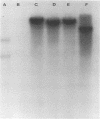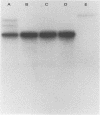Abstract
Pseudomonas putida aggressively colonizes root surfaces and is agglutinated by a root surface glycoprotein. Mutants of P. putida derived chemically or by Tn5 insertion demonstrated enhanced or decreased agglutinability. Two nonagglutinable Tn5 mutants (Agg−) and two mutants with enhanced agglutinability (Aggs) possessed Tn5 in unique restriction sites. Agg− mutants colonized root surfaces of seedlings grown from inoculated seeds, but at levels lower than those observed with the Agg+ parent. In short-term binding studies, Agg− cells adhered at levels that were 20- to 30-fold less than those for Agg+ parental cells. These data suggest that the agglutination interaction plays a role in the attachment of P. putida to root surfaces.
Full text
PDF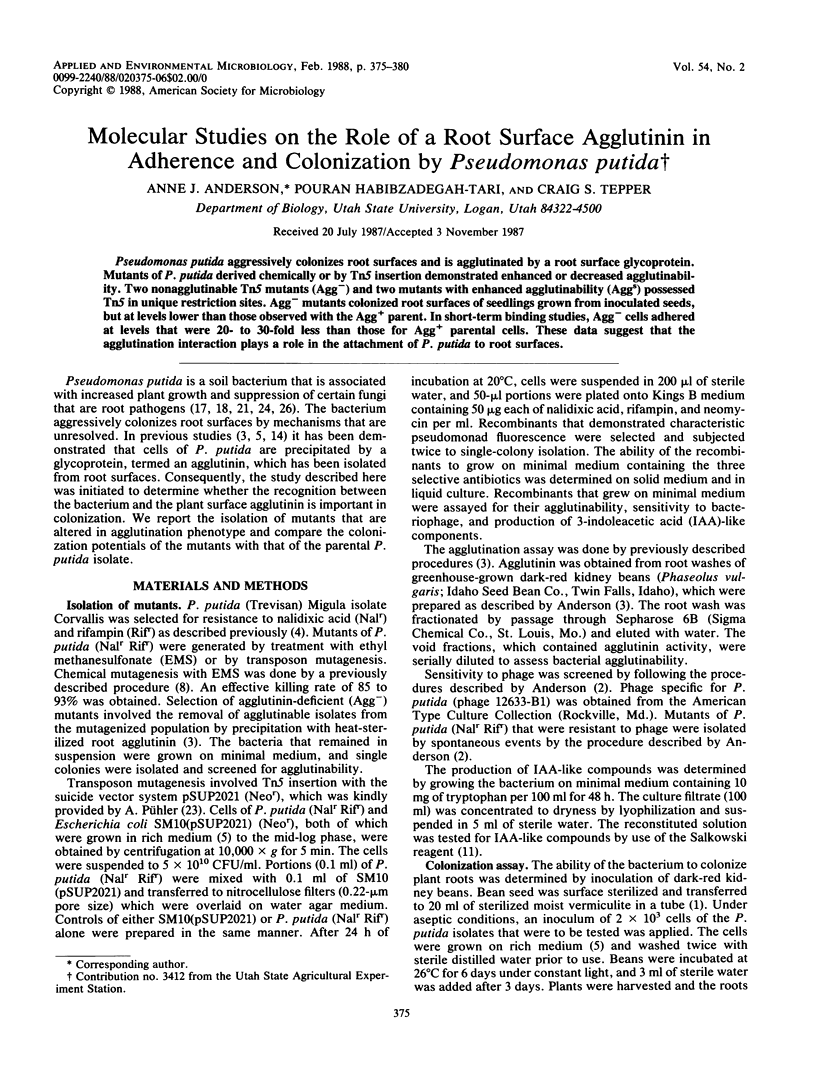
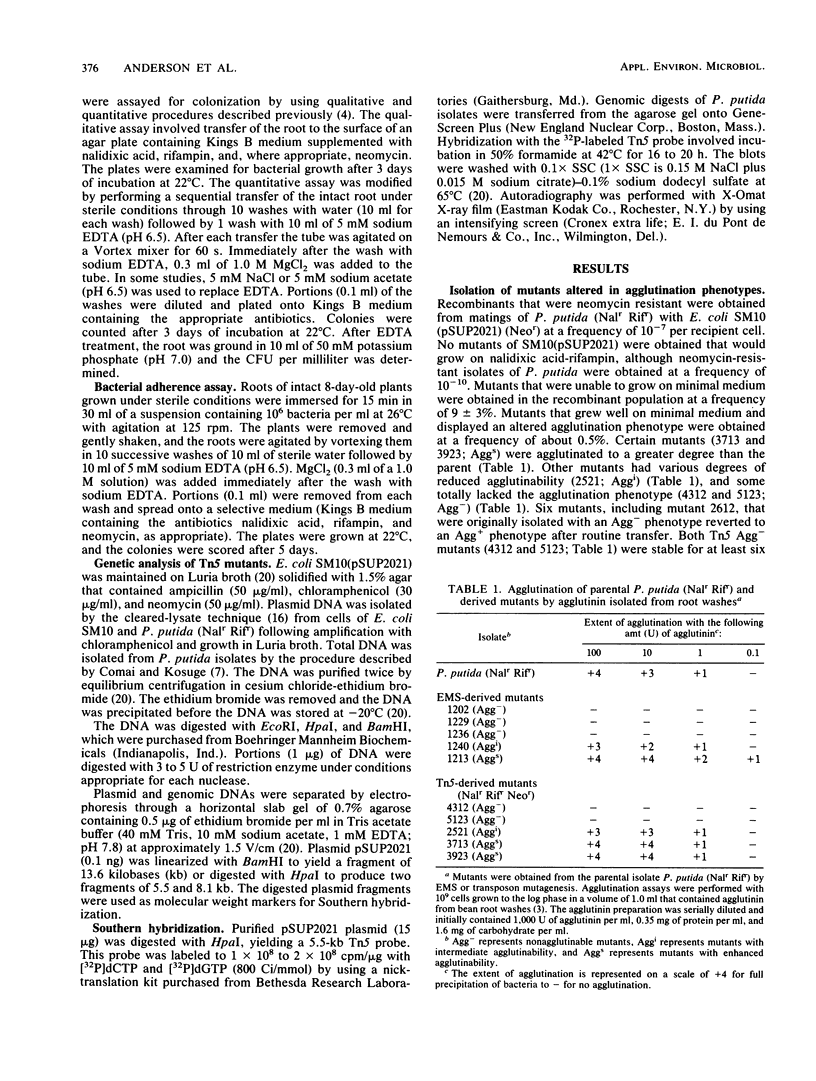
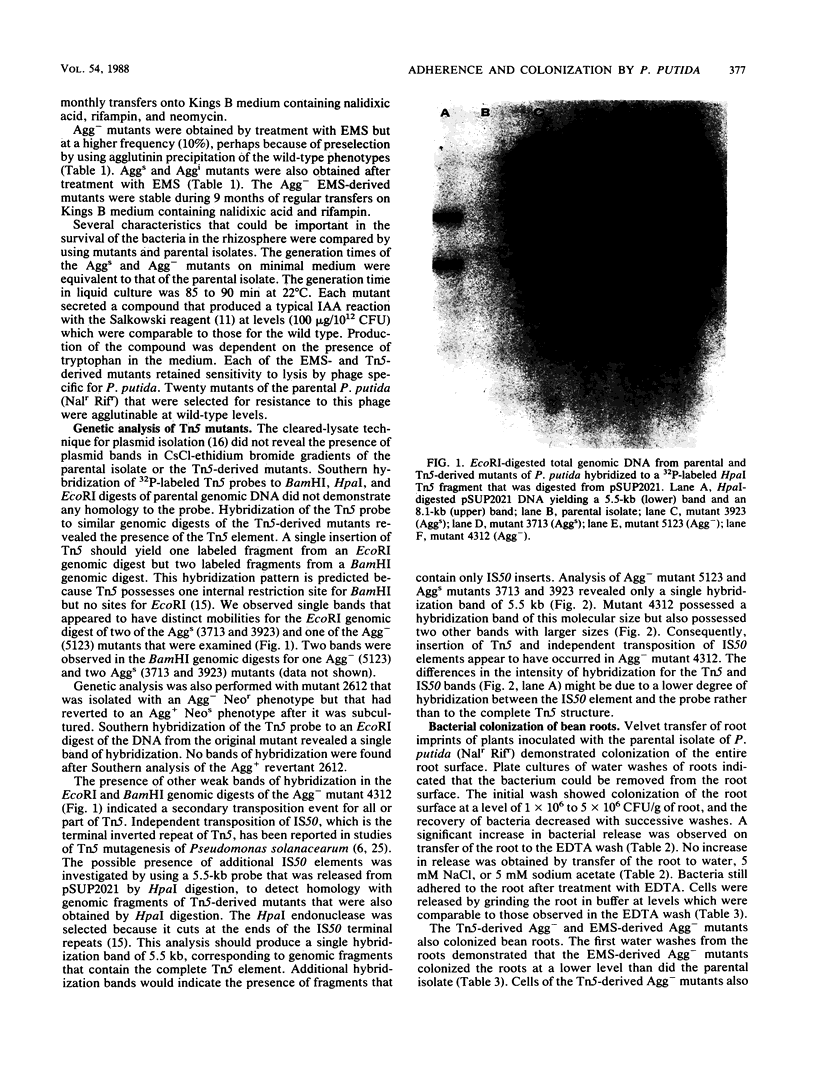
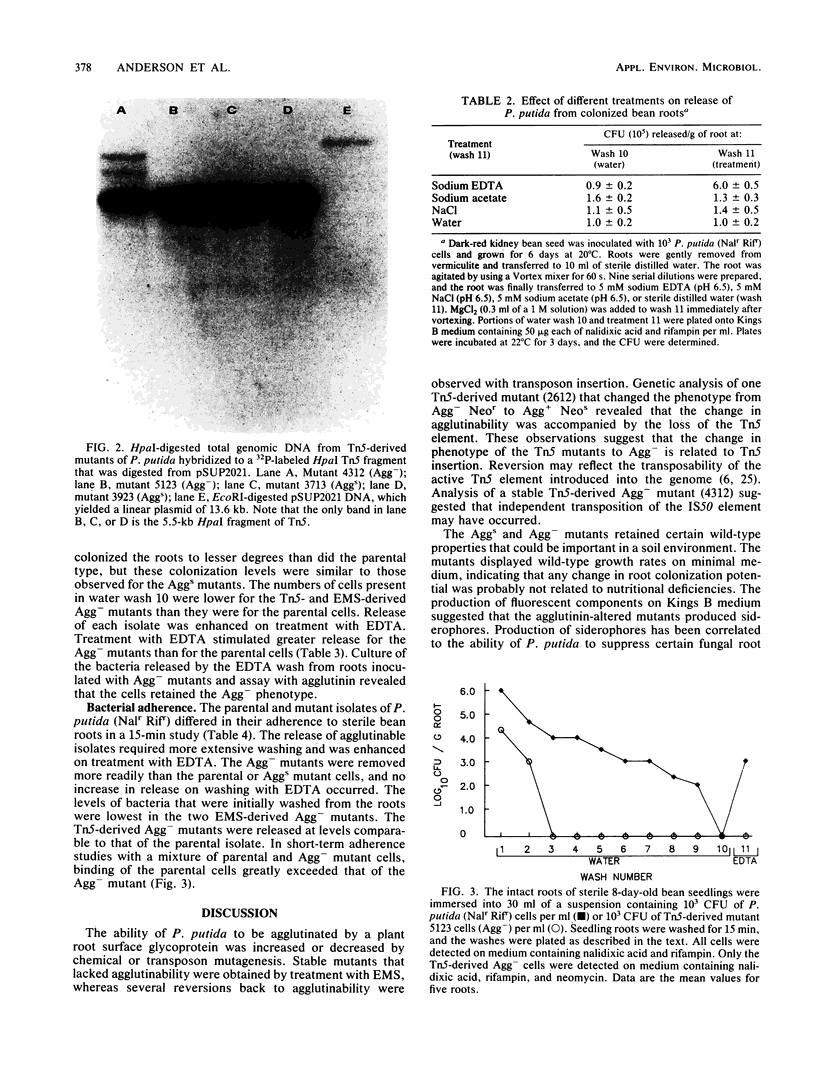
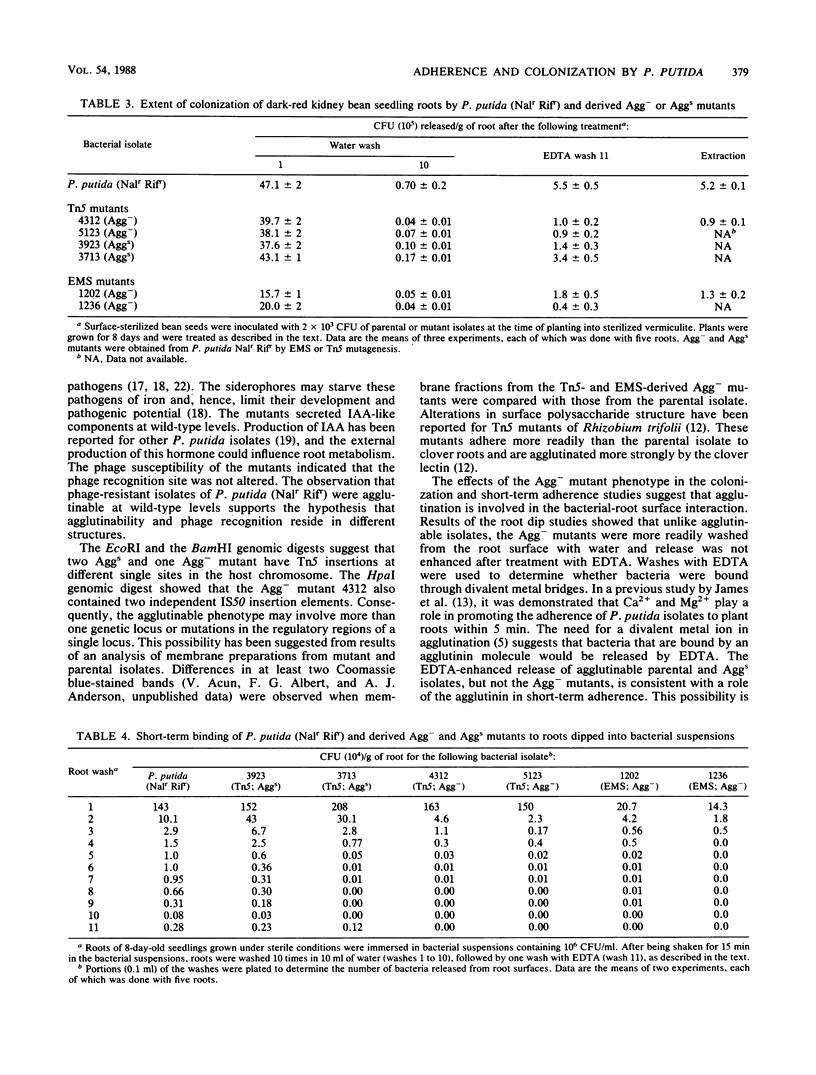
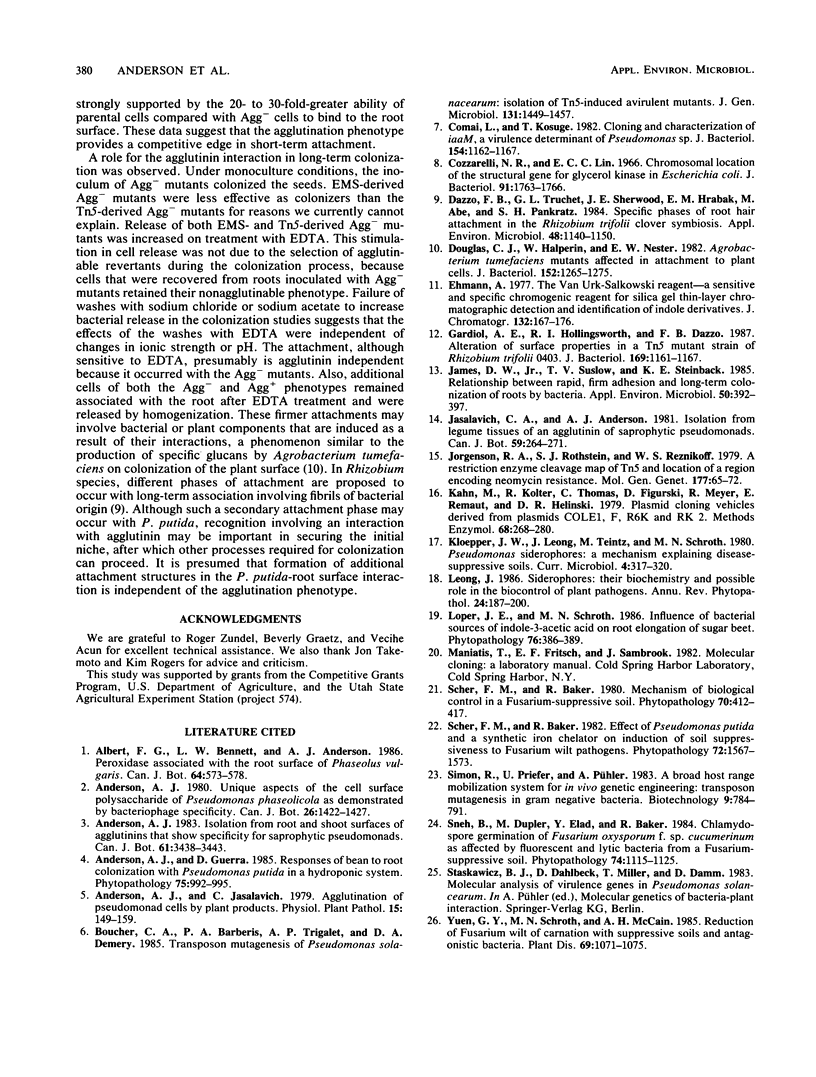
Images in this article
Selected References
These references are in PubMed. This may not be the complete list of references from this article.
- Anderson A. J. Unique aspects of the cell surface polysaccharide of Pseudomonas phaseolicola as demonstrated by bacteriophage specificity. Can J Microbiol. 1980 Dec;26(12):1422–1427. doi: 10.1139/m80-237. [DOI] [PubMed] [Google Scholar]
- Comai L., Kosuge T. Transposable element that causes mutations in a plant pathogenic Pseudomonas sp. J Bacteriol. 1983 Jun;154(3):1162–1167. doi: 10.1128/jb.154.3.1162-1167.1983. [DOI] [PMC free article] [PubMed] [Google Scholar]
- Cozzarelli N. R., Lin E. C. Chromosomal location of the structural gene for glycerol kinase in Escherichia coli. J Bacteriol. 1966 May;91(5):1763–1766. doi: 10.1128/jb.91.5.1763-1766.1966. [DOI] [PMC free article] [PubMed] [Google Scholar]
- Dazzo F. B., Truchet G. L., Sherwood J. E., Hrabak E. M., Abe M., Pankratz S. H. Specific phases of root hair attachment in the Rhizobium trifolii-clover symbiosis. Appl Environ Microbiol. 1984 Dec;48(6):1140–1150. doi: 10.1128/aem.48.6.1140-1150.1984. [DOI] [PMC free article] [PubMed] [Google Scholar]
- Douglas C. J., Halperin W., Nester E. W. Agrobacterium tumefaciens mutants affected in attachment to plant cells. J Bacteriol. 1982 Dec;152(3):1265–1275. doi: 10.1128/jb.152.3.1265-1275.1982. [DOI] [PMC free article] [PubMed] [Google Scholar]
- Gardiol A. E., Hollingsworth R. I., Dazzo F. B. Alteration of surface properties in a Tn5 mutant strain of Rhizobium trifolii 0403. J Bacteriol. 1987 Mar;169(3):1161–1167. doi: 10.1128/jb.169.3.1161-1167.1987. [DOI] [PMC free article] [PubMed] [Google Scholar]
- James D. W., Suslow T. V., Steinback K. E. Relationship between Rapid, Firm Adhesion and Long-Term Colonization of Roots by Bacteria. Appl Environ Microbiol. 1985 Aug;50(2):392–397. doi: 10.1128/aem.50.2.392-397.1985. [DOI] [PMC free article] [PubMed] [Google Scholar]
- Jorgensen R. A., Rothstein S. J., Reznikoff W. S. A restriction enzyme cleavage map of Tn5 and location of a region encoding neomycin resistance. Mol Gen Genet. 1979;177(1):65–72. doi: 10.1007/BF00267254. [DOI] [PubMed] [Google Scholar]
- Kahn M., Kolter R., Thomas C., Figurski D., Meyer R., Remaut E., Helinski D. R. Plasmid cloning vehicles derived from plasmids ColE1, F, R6K, and RK2. Methods Enzymol. 1979;68:268–280. doi: 10.1016/0076-6879(79)68019-9. [DOI] [PubMed] [Google Scholar]



